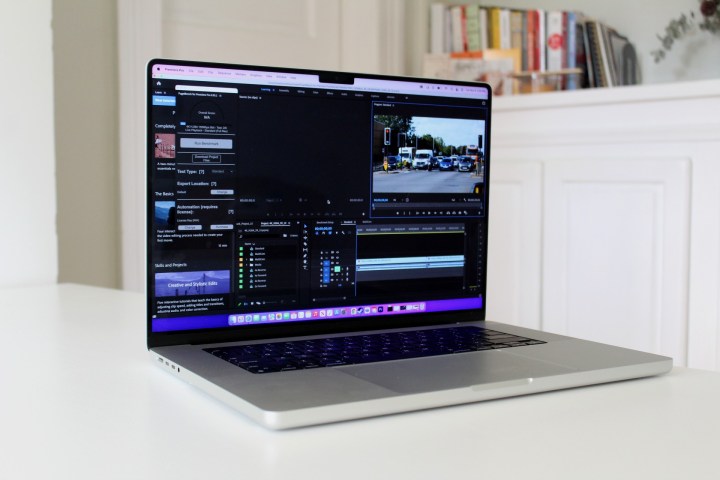
The MacBook Pro, specifically the M3 Pro or M3 Max 16-inch option, presents a real challenge to comparable Windows laptops. It’s incredibly powerful, especially considering how remarkable the battery life is and how quiet the system stays under load.
While no Windows laptops can currently emulate that exact profile of a system, that doesn’t mean there aren’t solid alternatives to the MacBook Pro. Their battery life may be weaker and they may get rather hot and loud — but in some cases, they offer stronger overall performance. If you want a premium, relatively portable powerhouse, but want to stay on the Windows side of the aisle, these are your best options.
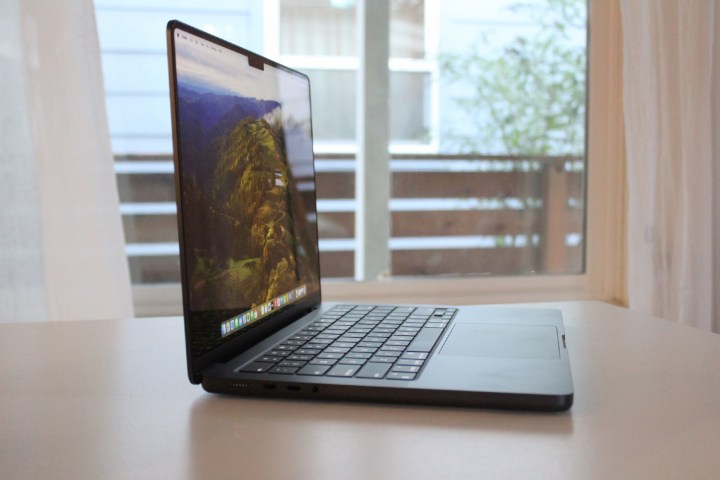
MacBook Pro M3
The large-form laptop to beat
- Space Black is the new king
- GPU performance gets big upgrade
- XDR display is even brighter
- Speakers are fantastic
- Decent webcam
- Storage and RAM is soldered on
- M3 model only supports one external display
The MacBook Pro 16 undid several decisions that Apple made over the years with its MacBook lineup. First, Apple got rid of the Touch Bar, a feature that few people seemed to use and even fewer seemed to enjoy. Second, it abandoned its seeming quest for ultimate thinness and added a few millimeters to fit in some additional ports. Apple had already gotten rid of the butterfly keyboard that was prone to malfunction and felt like typing on a block of wood — implementing a new Magic Keyboard with scissor switches that are the best you’ll find on a laptop today.
But that’s not all. The current MacBook Pro 16 utilizes up to the Apple M3 Max CPU, an ARM-based processor that’s among the fastest mobile chips for creative applications. You must configure one of Intel’s highest-end mobile CPUs, such as the 14th-gen Core 9i-14900HX, mated with a high-end discrete GPU, to get the close to the same performance from a Windows machine.
The MacBook Pro 16 is an expensive machine when fully maxed out, but it’s also a standard for how well a laptop can be designed and built. You also can’t forget the excellent mini-LED display and the Force Touch touchpad that’s second to none. Taken as a whole, it’s a tough machine to beat, but the laptops that follow can give it a run for its money.

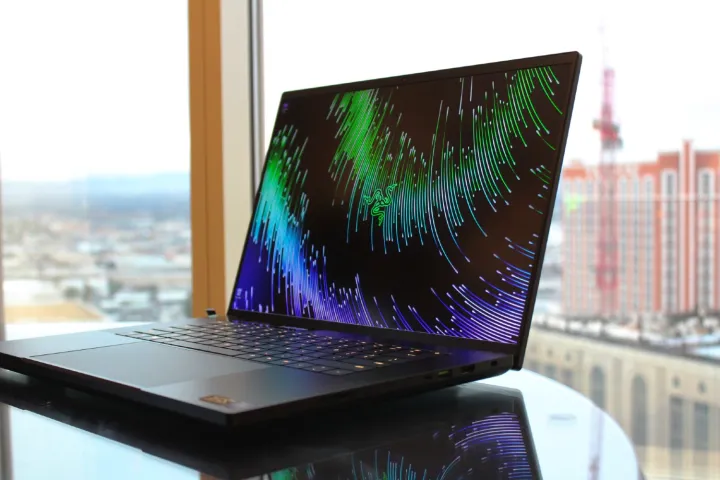
Razer Blade 16
A powerful machine for gamers first, creators second
- Powerful components
- Modern aesthetic
- Solid build quality
- Fast creative performance
- Super-fast gaming
- Excellent OLED display option
- Very expensive
The Razer Blade 16 is as sleek a laptop as you’ll find outside of the MacBook Pro 16. Its all-black exterior and chiseled aesthetic rival Apple’s best in terms of its industrial design. It’s just as solid, too, with that same feeling of being chiseled out of a solid piece of metal (which it is). If you’re looking for a laptop that feels like a MacBook Pro 16, then the Razer Blade 16 is your best choice.
At the same time, the Razer Blade 16 can provide performance that rivals the MacBook Pro 16 with its M3 Max CPU — and in many cases outshines it. The Razer comes with a 14th-gen Core i9-14900HX, a very fast 55-watt CPU with 24 cores (eight Performance and 16 Efficient) and 32 threads. When configured with the Nvidia GeForce RTX 4090 GPU, the Razer Blade 16 will churn through applications like Adobe’s Premiere Pro. Apple’s M3 Max chipset benefits from CPU optimizations that speed up video encoding and decoding processes, but the RTX 4090 speeds up the same kinds of things.
And then, that RTX 4090 will net you better gaming performance than Apple’s machine could ever dream of. You’ll also get the option of a 16.0-inch 16:10 QHD+ (2460 x 1600) OLED display that not only produces brilliant colors and inky blacks, but also runs at a blistering 240Hz. All that makes the Razer Blade 16 as much a gamer’s dream laptop as a creator’s, something the MacBook Pro 16 can’t match.

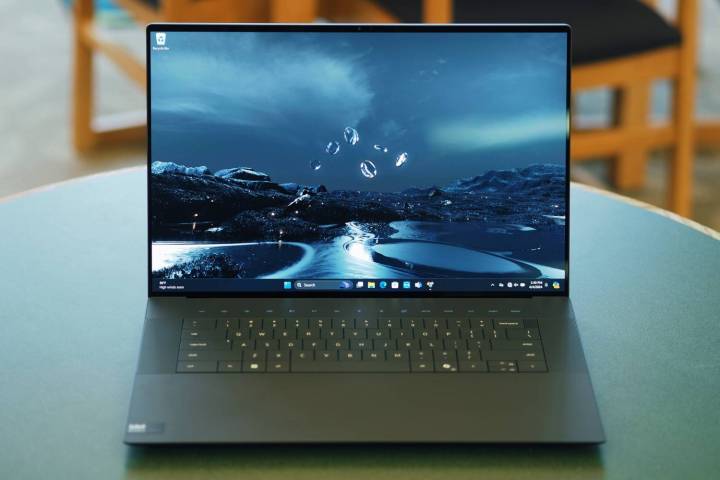
Dell XPS 16
A sleeker alternative
- Attractive, ultramodern aesthetic
- Good keyboard and haptic touchpad
- Strong productivity and creative performance
- Decent 1440p gaming
- A very nice OLED display
- Pleasing audio
- Too expensive
- LED touch function keys are a bust
- Battery life can’t keep up
Dell’s XPS 16 has the most standout design of any laptop on this list. It’s constructed of CNC machined aluminum in the lid and chassis bottom, with sleek lines that are a little more extravagant than the MacBook Pro 16’s simpler lines. Open it up and you’ll find some ultramodern — and controversial — features like a zero-lattice keyboard, a row of LED function keys, and a hidden haptic touchpad in an all-glass palm rest. The XPS 16 is as solidly built as the MacBook Pro 16 while being a more streamlined and arguably more attractive machine.
The XPS 16 is a new machine that can be configured with a 45-watt Intel Core Ultra 9 185H chipset with 16 cores (six Performance, eight Efficient, and two Low Power Efficient) and 22 threads, and up to an RTX 4070 GPU. In addition, up to 65GB of RAM and 4TB of fast SSD storage can be configured.
However, the XPS 16, while expensive, is less costly at the high end. And you’ll have a Windows laptop that will still be faster in its gaming performance while also providing solid creative application support. You’ll also get a 4K+ OLED display that will please creators and an overall design that’s just as excellent as Apple’s best.


Lenovo Yoga Pro 9i 16
A powerhouse for less
- Competitive pricing
- Excellent creativity performance
- Solid 1440p gaming
- Very good mini-LED display
- Attractive quality build
- Class-leading audio
- Display contrast isn’t the best
- Needs a haptic touchpad
If you want fast performance for less, the Lenovo Yoga Pro 9i 16 is an excellent option. It’s thousands less, even less expensive than the XPS 16, and yet it offers very fast performance. It’s not quite as fast or long-lasting as the MacBook Pro 16, but still fast enough for demanding creators.
It provides the usual excellent ThinkPad build quality and keyboard, and enough RAM and storage to be more than fast enough. Its design is conservative yet still attractive. You can choose the Core Ultra 9 185H chipset and an RTX 4060, which is a lower rung of GPU than the XPS 16 offers but with a lot more power and so better overall performance.
The laptop is built around an excellent 16-inch mini-LED display and offers more connectivity than any of the other laptops on this list. For an all-around laptop that currently represents the top of Lenovo’s performance lineup, the Yoga Pro 9i 16 is a strong competitor.

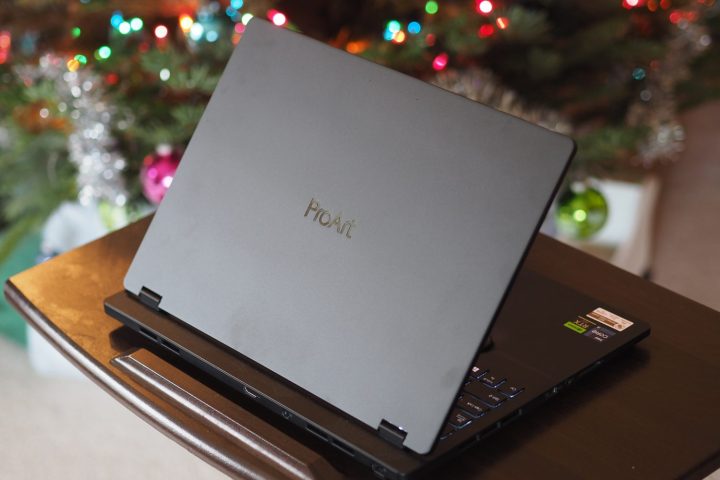
Asus ProArt Studiobook 16 OLED
Highly optimized creative design
- Solid creativity performance
- Good 1080p gaming performance
- Useful Asus Dial
- Excellent OLED display
- Responsive haptic touchpad
- Expensive
- Poor battery life
- Touchpad position is odd
Asus is best known for some of its unusual and highly focused designs, and its ProArt Studiobook 16 OLED is aimed directly at the same creative market as the MacBook Pro 16. The laptop has an equally solid and quality build, but stands out with the Asus Dial next to the touchpad that offers a unique way to control creative applications like Adobe Premiere Pro and Photoshop. The ProArt Creator Hub offers an array of special features for controlling colors and apps.
Performance is provided by a fast 45-watt Core i9-13900HX with 24 cores (eight Performance and 16 Efficiency) and 32 threads mated with up to an RTX 4070. It’s a fast laptop for video and photo editing, and can play some games while it’s at it. The keyboard and touchpad are also very good, making for a well-rounded laptop.
The 16.0-inch 3.2K (3200 x 2000) OLED display is also second to none. If you want a creator’s laptop using the Windows platform, you can’t go wrong with the ProArt Studiobook 16 OLED.

Services Marketplace – Listings, Bookings & Reviews
